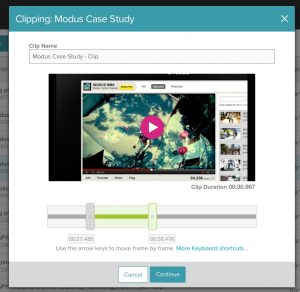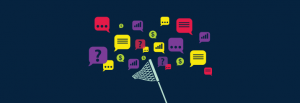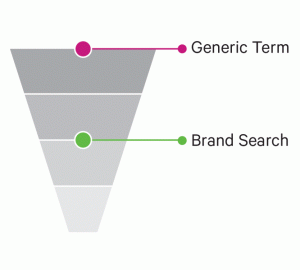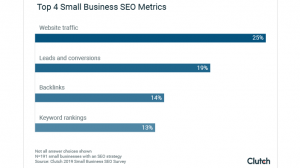Wonder why customers aren’t using your digital product? It may be time to examine product friction.
Product friction is anything that represents a barrier to user adoption or retention. From an overly complicated sign-up process to difficult-to-navigate menus, if too much friction exists, customers will not change their current behavior to use your product, no matter how great it is. That’s why it is critical to detect and anticipate friction points by monitoring a customer’s journey with your product.
According to Kintan Brahmbhatt, Director of Product Management and Technical Program Management at Amazon, “When building products, you’re always either removing, adding, or masking friction.” Sometimes friction is unavoidable, but it is critical to remove as much friction as possible – and continue to proactively combat friction as your product evolves.”
There are three types of product friction:
Friction due to unfamiliarity
If a customer downloads your product and does not understand how to use it, friction already exists. This is one of the most difficult challenges when introducing a new product to users.
Friction by design
Sometimes friction is intentionally built into a product. Brahmbhatt says if your product does have a learning curve, you must design the experience thoughtfully.
Friction due to misalignment with human behavior
This friction is caused when your product fails to anticipate how consumers will use it. Examples include a poorly designed navigation or device incompatibility for those you say your product supports.
Reduced product friction results in less user frustration and higher retention – but how do you remove friction completely? In an article on product friction, TechCrunch discussed how companies such as Uber deliver frictionless product experiences that keep users coming back. Here’s an example TechCrunch shared of a frictionless product experience in action (friction points italicized below):
The Taxi Experience
- Find a Car: Stand on the street and attempt to hail a cab. In major cities, this can be a long, frustrating experience.
- Set Destination: Tell the driver where you’d like to go.
- Ride: Many taxis aren’t the most peaceful drivers.
- Pay: Take out your wallet and pay with cash or card.
- Tip: Calculate the tip to add to your fare.
The Uber Experience
- Find a Car: Open the Uber app and select Pick Me Up. The car usually arrives in 10 minutes or less. Users can track the location of their Uber in the app.
- Set Destination: Add your destination in the app ahead of time to let the driver know where you’re going.
- Ride: Almost always a quiet, peaceful experience.
- Pay: Credit card information is added to the app ahead of time. At the end of the trip, your card is charged automatically.
- Tip: Uber calculates the tip for you and included in the fare.
Uber has reduced all friction for the user, making it a pleasurable experience that has resulted in huge success for the company. Uber continues to keep product friction top of mind as the company grows, adding offerings such as UberBlack, which provides users with a more elevated ride experience in a high-end black car with professional drivers, and uberPool, affordable door-to-door rides that allow users to share the ride and the cost.
You probably experience friction daily and not even realize it. Consider checking out at the grocery store, paying for your morning latte, or placing an online order. Digging through your bag for your wallet or manually entering card information can be a time-consuming process. Inserting payment information on small screens can also be difficult and cumbersome. This is an experience that benefits neither the merchant nor the customer. Aimed at solving one of the biggest pain points in mobile commerce, Apple Pay hopes to eliminate checkout frustration.
With Apple Pay, users can make secure purchases in stores, in apps, and on the Internet using the Apple products they carry every day. Users can even send and receive money from family and friends directly in Messages. Calling itself “a next generation checkout solution,” Apple Pay’s seamless transactions, speedy one-click payments, and Touch ID technology decrease fraud, increase consumer trust, and reduce friction points such as the need to manually enter detailed payment information. Companies and retailers including AirBnB, Target, McDonalds, and Walgreens are already seeing success with Apple Pay for mobile conversions – and their customers are loving it. For a list of other retailers and restaurants that accept Apple Pay, check out this list provided by Apple.
One final product example comes from Columbus-based Root Insurance. Root is the first car insurance company that was “founded on the relentless pursuit of fairness.” The company uses an app to rate drivers based on how they drive – the better the driver, the better the rate.
In a TechCrunch article, Root founder, Alex Timm, discussed Root’s success and how the company’s goal is to “make the fairest, simplest product”, something that cannot be done when multiple instances of friction exist. Think back to the last time you shopped for a new auto insurance policy. Did you encounter product friction? Odds are the process to get a quote went something like this:
- Go to an insurance provider’s website and click Get a Quote
- Add your personal Information – a lengthy process which includes:
- Name and contact information
- Vehicle make, model, usage and mileage
- Driver information, including marital status, social security number, home ownership status, employment status, and education history
- Previous traffic violations
- Receive quote
- Accept quote and purchase (or continue to search for alternatives)
- Contact previous auto insurer to cancel policy
Knowing that shopping for auto insurance is often a tedious, frustrating experience, Root set out to remake the process of applying for – and insuring – drivers. Unlike other insurers, Root’s entire process can be done from a smartphone, no need for a computer. Users download the Root app, scan their drivers’ license, and Root’s software automatically updates the insurance application with the required personal information. Before receiving a quote, users are required to take a test drive; the app tracks their driving (braking, turns, how much they drive, etc.) using the accelerometer and other sensors on their smartphones to calculate rates. If you receive a quote, you can customize and purchase your policy, make changes to the policy, file a claim, and even have Root cancel your old insurance for you, all without leaving the Root app.
As stated earlier, sometimes friction is intentionally built into a product; however, in these cases it is critical to design this user experience thoughtfully. As part of its application process, Root’s test drive takes 2-3 weeks’ time. For some users, this may be too long to wait for a quote and other competitors, despite a lengthy process, can provide quotes instantly. So, why does Root include this as part of their product design? Remember, the quote is based on how well you drive, which takes more than a few minutes to evaluate. But, is the wait worth it to users and does it ultimately improve the user’s experience with the product?
The answer, based on Root’s rapid growth and continued expansion into states across the country, is yes. By not insuring bad drivers, Root is able to save good drivers as much as 52% on their car insurance. On average, Root, can save 20% on the typical insurance policy. The lowest premiums the company has issued are $ 12 per month. According to Timm, “For the best 30% of drivers we cut the price [of insurance] in half. For the best 70% of drivers, we’re the cheapest in the market.”
To help you deliver a frictionless user experience, AWH – a digital product consulting, user experience, and software development firm – has created a scorecard outlining common causes of product friction. Use the scorecard to identify and address potential friction areas to dramatically improve product adoption and retention. A score of three (3) points or more may put your product at risk. A score of five (5) points or more will likely be a friction threshold that is insurmountable.
Business & Finance Articles on Business 2 Community(44)






